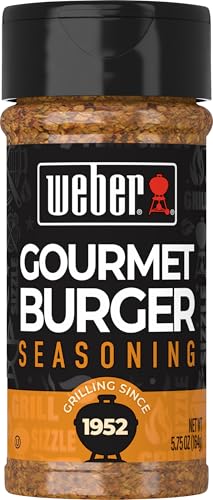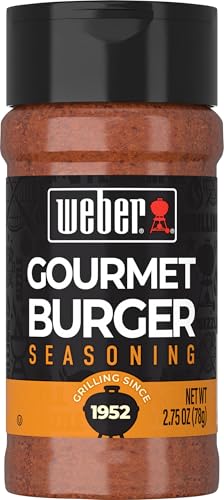Key Takeaways
- Culinary Revolution: The 1950s marked a significant shift in American dining, with burgers becoming the centerpiece of the burgeoning drive-in culture that symbolized freedom and youth.
- Social Hubs: Drive-in diners transformed into popular meeting spots for families and friends, blending social interaction with convenient dining experiences centered around burgers and shakes.
- Cultural Impact: The drive-in experience fostered a sense of community and camaraderie, influencing youth culture and creating lasting memories tied to shared meals and vibrant socialization.
- Iconic Burgers: Various 1950s burger styles, including the classic cheeseburger, sliders, barbecue burgers, and Hawaiian burgers, showcased the era’s culinary creativity and appealed to diverse tastes.
- Notable Fast-Food Establishments: Chains like McDonald’s, A&W, White Castle, and In-N-Out Burger gained popularity, advertising quick service and quality ingredients that contributed to the fast-food phenomenon.
- Enduring Influence: The spirit of 1950s drive-in culture continues to inspire modern burger enthusiasts, blending nostalgic flavors with innovative recipes for contemporary dining experiences.
When I think of the 1950s, images of classic cars, jukeboxes, and the tantalizing aroma of burgers sizzling on the grill come to mind. This era marked the birth of drive-in culture, where families and friends gathered to enjoy not just a meal but an experience. The thrill of ordering from your car and watching servers glide by on roller skates added a touch of magic to what we now consider a simple meal.
Burgers became more than just food; they symbolized freedom and fun. With the rise of fast-food chains and drive-ins, the iconic burger became a staple in American life. Let’s take a nostalgic journey back to the 1950s and explore how this vibrant drive-in culture shaped our love for burgers and created lasting memories.
Overview of Burgers in the 1950s
The 1950s marked a turning point in America’s culinary landscape, especially regarding burgers. Drive-ins became social hubs, where families gathered to enjoy meals in their cars. Burgers quickly became the star of the menu, symbolizing freedom and the burgeoning youth culture.
Fast-food chains emerged during this decade, offering quick, affordable meals. The introduction of the hamburger as a staple drove the popularity of these establishments. Burgers weren’t just food; they represented a carefree lifestyle, often consumed while enjoying the company of friends and family.
Signature characteristics of the 1950s burger include juicy beef patties, fresh lettuce, ripe tomatoes, and creamy mayonnaise, all nestled between soft burger buns. Toppings varied widely, from classic cheese slices to pickles and onions, creating a mouthwatering experience. The simplicity of these burgers made them appealing, and many people relished the chance to customize their orders.
Understanding how burgers became an integral part of American culture in the 1950s illustrates my passion for crafting unique burgers today. Whether imitating classic recipes or innovating with new ingredients, the spirit of that iconic era undeniably influences the way I create and share burgers with friends and family. Each new burger I make pays homage to this vibrant decade while allowing me to explore exciting flavors and combinations.
The Rise of Drive-In Diners
Drive-in diners flourished in the 1950s, becoming a cultural phenomenon that combined convenience with social interaction. Families gathered in their cars, sharing meals while enjoying the vibrant atmosphere. Burgers took center stage, reflecting a pivotal moment in American dining.
The Convenience Factor
Drive-ins offered unparalleled convenience. Customers could pull up, place orders from their cars, and enjoy fresh meals without leaving their vehicles. This quick service appealed to busy families and young people on the go. Menus featured appealing items like hamburgers, fries, and shakes, all designed for easy consumption. Many drive-ins even utilized carhop services, delivering food straight to parked cars, elevating the dining experience.
Cultural Impact on Society
Drive-in diners influenced American culture in profound ways. They became social hubs, where friends gathered before and after school, creating lasting memories over shared burgers and shakes. The era sparked a sense of freedom among the youth, who embraced the drive-in lifestyle. Movies often played on outdoor screens, merging culinary delights with entertainment. This cultural shift brought people together, fostering a shared love for burgers that continues today.
Iconic Burgers of the Era
The 1950s introduced burgers that defined a generation. Each bite carried a sense of freedom and joy, bringing families and friends together. Here are some classic recipes and notable restaurants that shaped burger culture during this vibrant decade.
Classic Recipes
- Classic Cheeseburger: This burger features a juicy beef patty topped with a slice of American cheese, fresh lettuce, sliced tomatoes, pickles, and ketchup. The simplicity of this recipe showcases how each element complements the others, creating a harmonious flavor profile.
- Sliders: Small but mighty, sliders defined the social eating experience. Ground beef seasoned with salt and pepper formed mini patties, grilled to perfection, then served on soft miniature buns with mustard, onions, and pickles. These bite-sized burgers encouraged sharing and experimentation.
- Barbecue Burger: A nod to regional flavors, this burger combines a beef patty with smoky barbecue sauce, crispy bacon, and coleslaw. The blend of sweet and savory provides a delightful twist, making it a favorite at cookouts.
- Hawaiian Burger: A unique creation, this burger includes a beef patty and a slice of grilled pineapple, topped with teriyaki sauce and lettuce. The tropical flavors add an unexpected excitement to the classic burger experience.
Notable Restaurants and Chains
- McDonald’s: Founded in the late 1940s, McDonald’s grew rapidly in the 50s with its iconic Big Mac, a double-decker burger offering layers of flavor and a quick service experience that appealed to busy families.
- A&W Root Beer: A&W started in the 1920s but became wildly popular in the 1950s with its drive-in restaurants. Their signature A&W Papa Burger, loaded with a beef patty, cheese, lettuce, tomatoes, and special sauce, showcased the fast-food phenomenon.
- White Castle: Launching in the 1920s, White Castle revolutionized the concept of fast food with their sliders. By the 50s, their small square burgers became a cultural icon, leading the way for convenience-focused dining.
- In-N-Out Burger: Although established in 1948, In-N-Out gained notoriety in the 50s for its fresh ingredients and secret menu. Their Double-Double, featuring two patties and two slices of cheese, emphasized quality over quantity, winning fans across the West.
Exploring these classic recipes and iconic establishments provides a taste of the 1950s burger culture and inspires me to create unique burger variations that honor this beloved era.
Drive-In Experience
The drive-in experience in the 1950s revolutionized how people enjoyed meals and fostered a unique culinary culture. Families and friends gathered around their cars to savor delicious burgers and thick shakes, creating lasting memories.
Carhops and Service Style
Carhops played a pivotal role in the drive-in scene. These energetic servers zipped around on roller skates, delivering orders straight to cars. Their friendly demeanor added to the lively atmosphere, making the experience special. I remember the excitement of ordering a classic cheeseburger, knowing a carhop would soon glide over with a tray full of mouthwatering treats. This direct service style combined convenience and fun, allowing diners to relish their meals without leaving the comfort of their vehicles. The interaction between carhops and customers created a sense of camaraderie that still resonates in today’s burger culture.
Social Gatherings and Youth Culture
Drive-ins became social epicenters for youth culture in the 1950s. Teens flocked to these venues to share burgers, fries, and gossip in a relaxed environment. The energy was palpable; laughter echoed, and excitement filled the air. I find inspiration in that communal vibe when crafting new burger recipes for my friends and family. The drive-in culture encouraged creativity, allowing flavors to blend and evolve as people experimented with toppings and condiments. This shared love for burgers set the stage for culinary innovation, igniting my passion for creating unique flavors inspired by those classic drive-in memories.
Conclusion
The drive-in culture of the 1950s truly shaped how we enjoy burgers today. It wasn’t just about the food; it was about the experience of gathering with family and friends in a lively atmosphere. Those juicy burgers and thick shakes became symbols of freedom and fun that still resonate with me.
As I think back to that vibrant decade, I can’t help but feel inspired by the creativity and camaraderie that surrounded those classic drive-ins. It’s a reminder of how food can bring people together and create lasting memories. So let’s keep celebrating those iconic flavors and the spirit of the 1950s every time we sink our teeth into a delicious burger.






